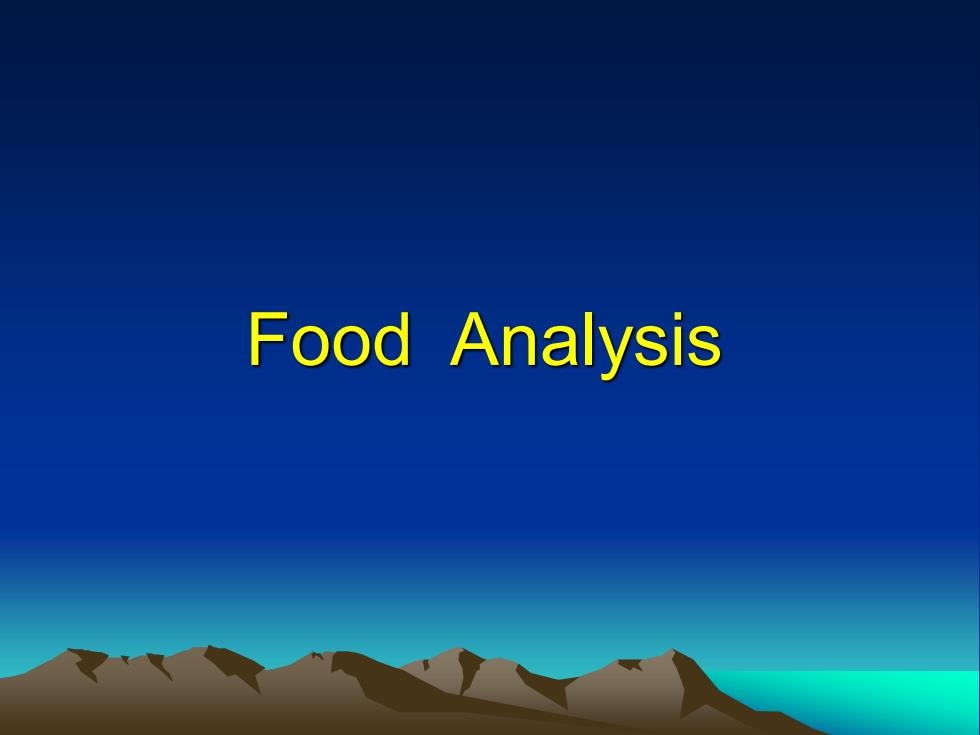
Food Analysis
Food Analysis
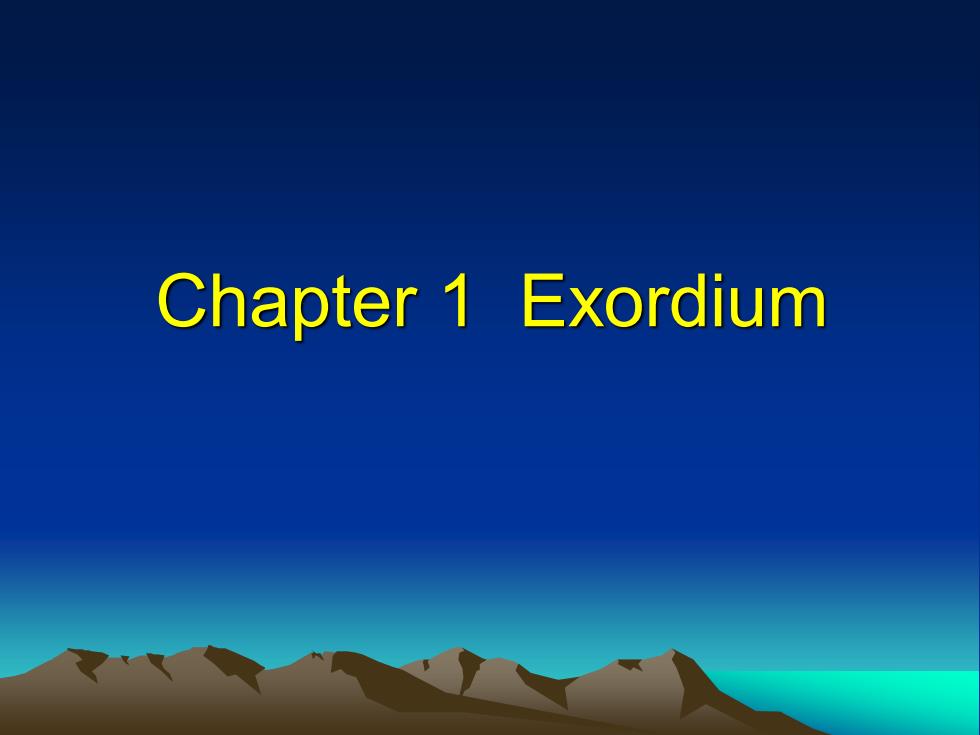
Chapter 1 Exordium
Chapter 1 Exordium
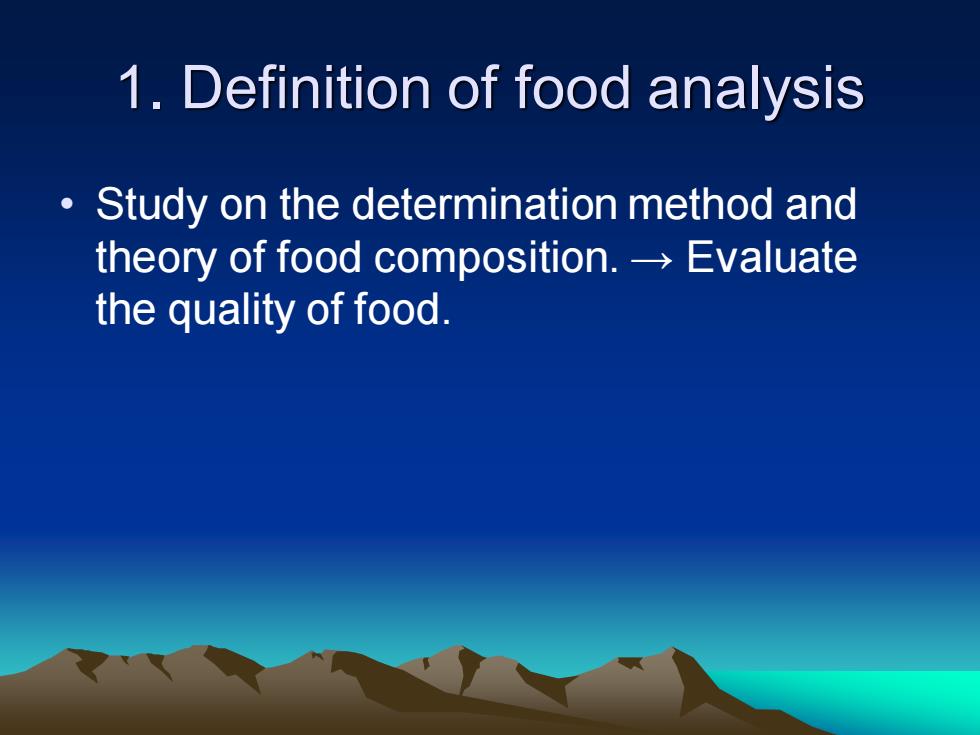
1. Definition of food analysis • Study on the determination method and theory of food composition. → Evaluate the quality of food
1. Definition of food analysis • Study on the determination method and theory of food composition. → Evaluate the quality of food
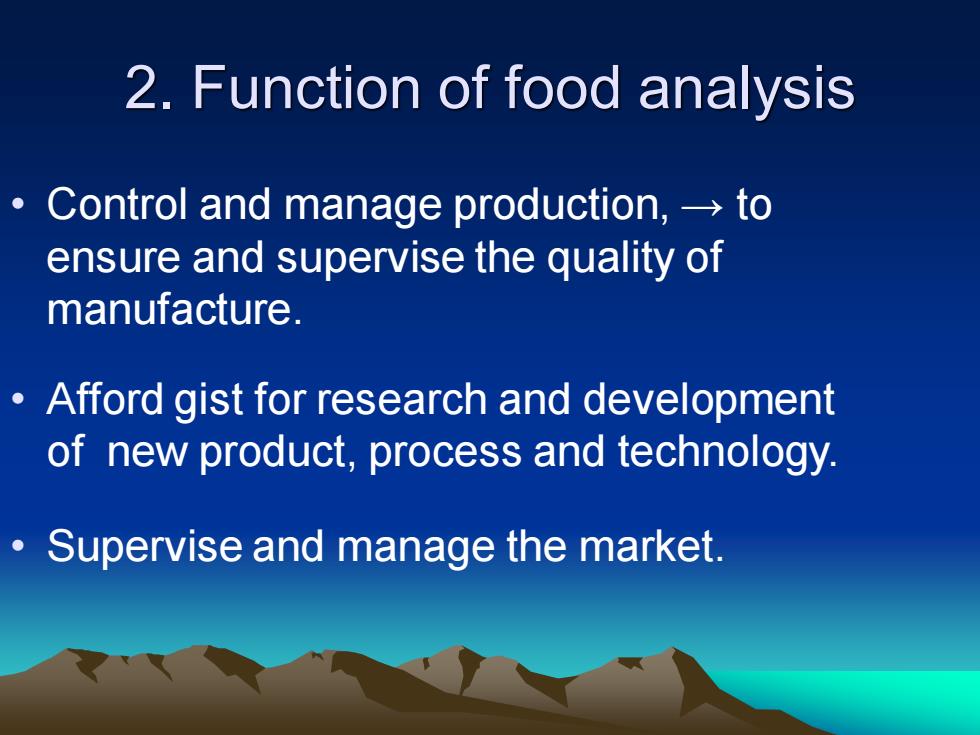
2. Function of food analysis • Control and manage production, → to ensure and supervise the quality of manufacture. • Afford gist for research and development of new product, process and technology. • Supervise and manage the market
2. Function of food analysis • Control and manage production, → to ensure and supervise the quality of manufacture. • Afford gist for research and development of new product, process and technology. • Supervise and manage the market

3. Content of food analysis ⚫ 3.1 Analysis of food nutrient ➢ 1) moisture, ash, mineral element, lipid, carbohydrate, protein and amino acid, organic acid, vitamin ➢ 2) nutritional label ➢ 3) main content and regular item Example: milk of “ datou baby
3. Content of food analysis ⚫ 3.1 Analysis of food nutrient ➢ 1) moisture, ash, mineral element, lipid, carbohydrate, protein and amino acid, organic acid, vitamin ➢ 2) nutritional label ➢ 3) main content and regular item Example: milk of “ datou baby

• 3.2 Examination on food safety • 1) Food additive: pigment, antiseptic, SO2 , H2O2 – range and quantity of use. 苏丹红 巨能钙
• 3.2 Examination on food safety • 1) Food additive: pigment, antiseptic, SO2 , H2O2 – range and quantity of use. 苏丹红 巨能钙
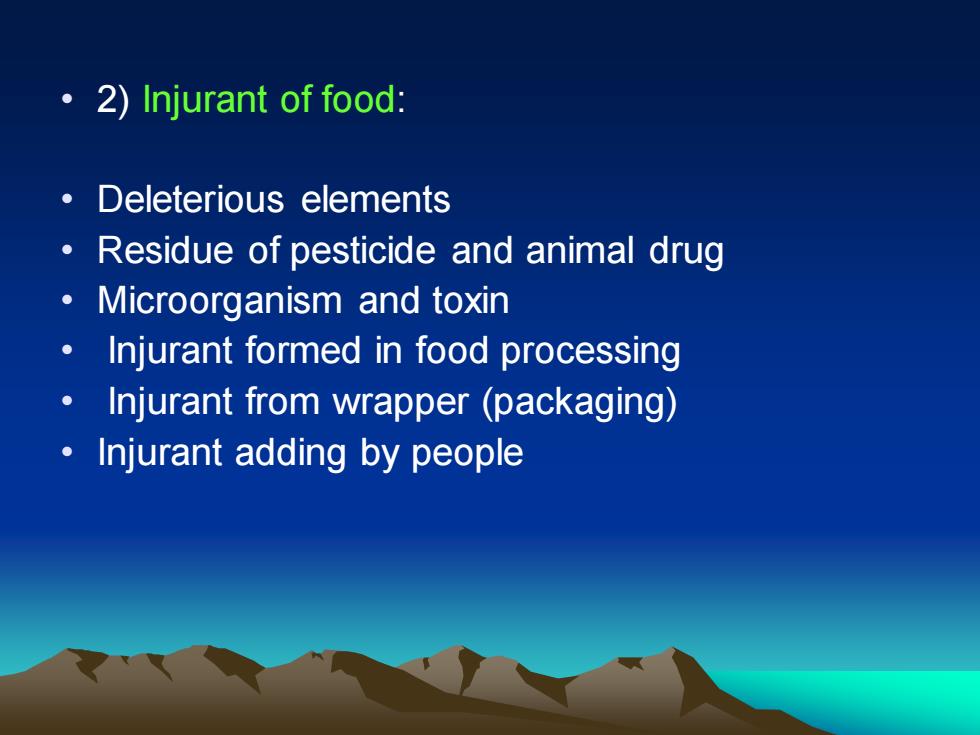
• 2) Injurant of food: • Deleterious elements • Residue of pesticide and animal drug • Microorganism and toxin • Injurant formed in food processing • Injurant from wrapper (packaging) • Injurant adding by people
• 2) Injurant of food: • Deleterious elements • Residue of pesticide and animal drug • Microorganism and toxin • Injurant formed in food processing • Injurant from wrapper (packaging) • Injurant adding by people
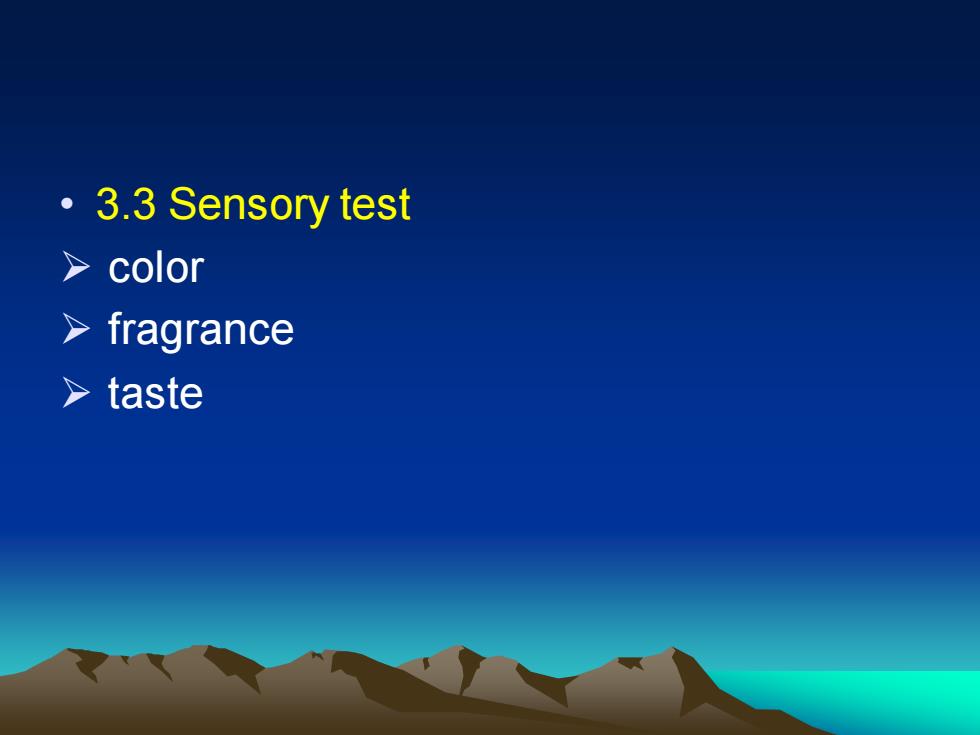
• 3.3 Sensory test ➢ color ➢ fragrance ➢ taste
• 3.3 Sensory test ➢ color ➢ fragrance ➢ taste
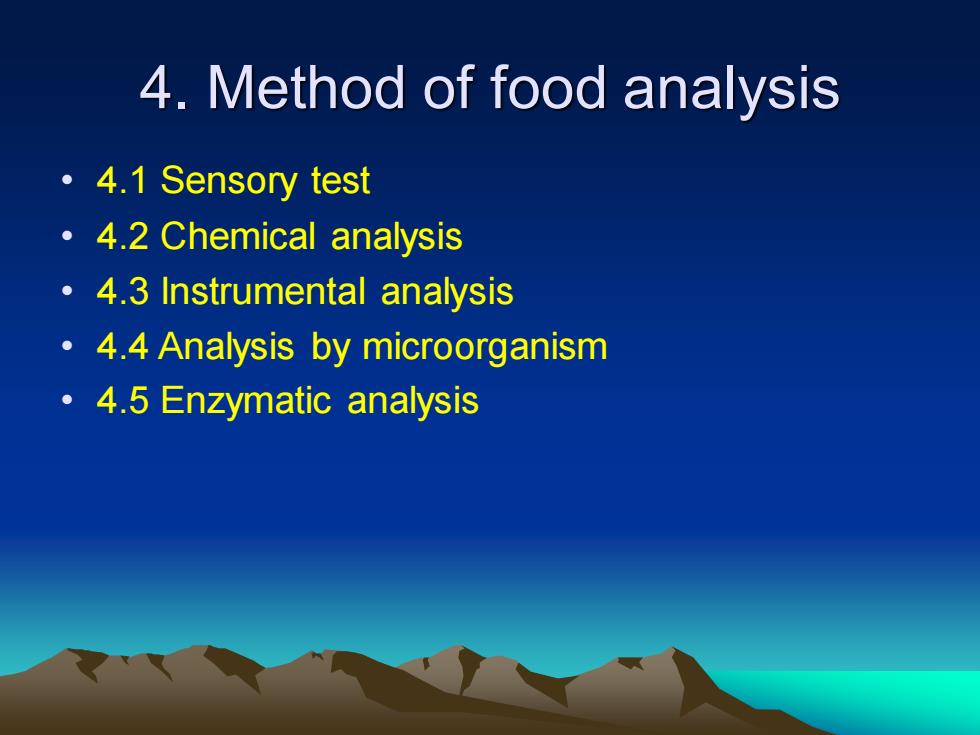
4. Method of food analysis • 4.1 Sensory test • 4.2 Chemical analysis • 4.3 Instrumental analysis • 4.4 Analysis by microorganism • 4.5 Enzymatic analysis
4. Method of food analysis • 4.1 Sensory test • 4.2 Chemical analysis • 4.3 Instrumental analysis • 4.4 Analysis by microorganism • 4.5 Enzymatic analysis

5. How to learn this course • Understand the basic theory and principle of food analysis • Observe and consider in experiments
5. How to learn this course • Understand the basic theory and principle of food analysis • Observe and consider in experiments